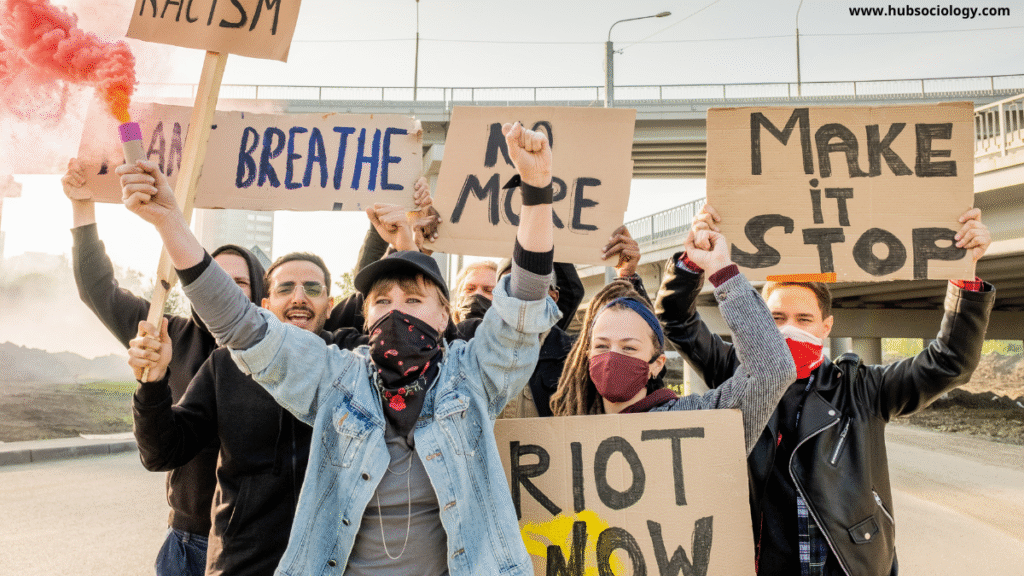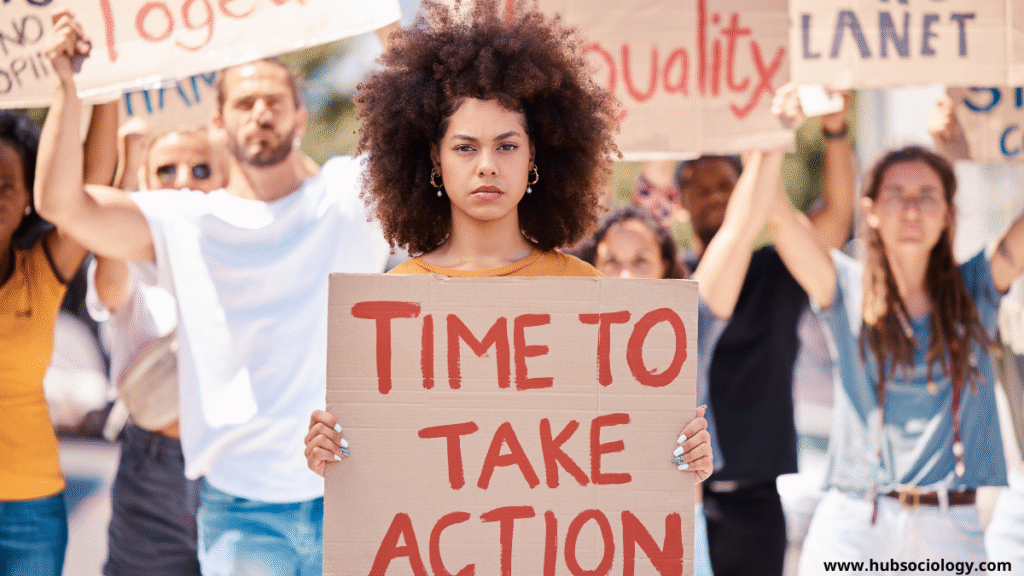Introduction
Karl Marx remains one of the most influential figures in sociology, not only because of his comprehensive critique of capitalism but also for his conceptualization of class conflict as the driving force of historical development. His ideas transcend economics and political theory, deeply embedding themselves in the sociological imagination. Marx viewed society as an arena of struggle where different groups with unequal access to resources and power compete with one another. Among these struggles, class conflict holds a central place, shaping both the structure of society and the trajectory of history.
From a sociological standpoint, class conflict is not merely an economic competition for material goods, but a social process that defines relationships, institutions, cultural norms, and collective consciousness. To understand Marx’s theory of class conflict, one must explore its origins, mechanisms, consequences, and continuing relevance in modern societies.

The Foundations of Class Conflict
Marx’s theory of class conflict is grounded in historical materialism—the idea that material conditions, particularly the mode of production, determine the social, political, and intellectual life of a society. According to Marx, every epoch in history is characterized by a specific mode of production (for example, feudalism, capitalism, socialism), and within each mode lies an antagonism between social classes with opposing interests.
- In feudalism, the conflict was between lords and serfs.
- The main struggle in capitalism is between the proletariat, or working class, who sell their labor power, and the bourgeoisie, or capitalist class, who possess the means of production.
This opposition, Marx argued, is structural and cannot be reconciled without a transformation of the economic base of society. Hence, class conflict is the motor of history, propelling societies from one stage to another.
Class as a Sociological Concept
According to Marxist sociology, a person’s class is determined by their relationship to the means of production rather than just their money or wealth.
- The Bourgeoisie controls land, capital, factories, and technology, thereby monopolizing power and economic surplus.
- The Proletariat has nothing to sell but their labor, which is exploited to generate profit for the bourgeoisie.
Class conflict is rooted in this connection of exploitation. It is not only economic but also social and cultural, as it produces inequalities in education, political power, health, and access to opportunities.

Mechanisms of Class Conflict
Marx identified several ways in which class conflict operates within society:
- Exploitation: The bourgeoisie extracts surplus value from the proletariat. Workers are paid wages lower than the value they create, which ensures profit for the capitalist. Exploitation is the hidden basis of wealth accumulation in capitalist systems.
- Alienation: Workers become alienated from the product of their labor, the process of work, their fellow workers, and even their own human potential. Alienation fosters resentment and dissatisfaction, intensifying class conflict.
- Ideology and False Consciousness: The ruling class dominates not only the economy but also the ideas of society. Through education, religion, media, and culture, the bourgeoisie propagates an ideology that legitimizes inequality. This creates a “false consciousness” among workers, making them believe the system is fair or inevitable.
- Class Consciousness: Over time, exploitation and alienation may lead the proletariat to develop class consciousness—the realization of their common interests against the bourgeoisie. This awareness transforms passive discontent into organized struggle, trade unionism, and eventually revolutionary movements.
Class Conflict and Social Change
Marx believed that revolution was the best way to end class struggle. As class awareness grows, the oppressed class rebels against the ruling class and changes the way things are produced. This has happened before: in order to create capitalism, the bourgeoisie themselves previously toppled feudal rulers. Marx foresaw that the bourgeoisie will be overthrown by the proletariat in a similar manner, resulting in socialism and ultimately a communist society without classes.
From a sociological angle, this theory highlights the centrality of conflict in shaping institutions. For instance:
- Labor laws, welfare systems, and minimum wages emerged as concessions to working-class movements.
- Trade unions and collective bargaining are products of ongoing class struggles.
- Even democratic reforms can be seen as outcomes of conflict between ruling elites and oppressed groups.
Thus, class conflict is not only destructive but also creative, fostering transformation in social structures.

Critiques and Alternative Views
While Marx’s theory of class conflict has had a profound influence, sociologists have also critiqued and expanded upon it.
- Class, according to Max Weber, is not the only factor contributing to conflict. He introduced the concepts of status and power, emphasizing that prestige, lifestyle, and political authority also shape inequality. For Weber, society is stratified in multiple dimensions, not just economic.
- Functionalists like Émile Durkheim criticized Marx’s emphasis on conflict, instead viewing society as an organism where different parts function together to maintain stability. They acknowledged inequality but argued it could serve social functions, such as motivating people to fill necessary roles.
- Modern Sociology recognizes new forms of conflict that Marx could not foresee, such as those based on gender, race, ethnicity, or environmental concerns. While these may intersect with class, they suggest a broader scope of social struggle.
Despite these critiques, Marx’s framework remains foundational for understanding structural inequalities and collective resistance.
Contemporary Relevance of Class Conflict
Though written in the 19th century, Marx’s ideas on class conflict remain strikingly relevant in the 21st century. In an era of globalization, neoliberalism, and digital capitalism, class divisions persist, often in new forms.
- Global Inequality: A small number of billionaires control wealth equivalent to that of billions of people. This mirrors Marx’s prediction of increasing concentration of capital.
- Precarious Labor: The rise of gig work, contractual jobs, and wage stagnation reflect new forms of exploitation. Workers face job insecurity, minimal benefits, and limited bargaining power.
- Social Movements: Strikes, protests against austerity, and demands for living wages across the globe reveal ongoing class struggles. Movements such as “Occupy Wall Street” echo Marx’s critique of capitalism.
- Ideology in Media: Advertising, consumerism, and digital platforms continue to reproduce capitalist ideology, shaping people’s desires and masking exploitation.
From a sociological standpoint, class conflict continues to shape institutions, policies, and even culture in subtle but powerful ways.
Conclusion
Karl Marx’s theory of class conflict remains one of the most enduring contributions to sociology. By situating conflict at the center of social life, Marx challenged the illusion of harmony and stability propagated by dominant ideologies. He demonstrated that the economic base of society profoundly influences its cultural and political structures, and that inequality is not accidental but structural.
In the sociological imagination, class conflict is more than an economic battle—it is a lens through which to understand the relationships between individuals, institutions, and historical change. Even though contemporary societies are more complex than Marx envisioned, the persistence of inequality, exploitation, and resistance shows that his analysis continues to resonate.
Marx’s message is ultimately one of transformation: where there is conflict, there is also the possibility of change. Sociology, by engaging with class conflict, not only interprets the world but can contribute to reshaping it toward greater justice and equality.
Do you like this this Article ? You Can follow as on :-
Facebook – https://www.facebook.com/hubsociology
Whatsapp Channel – https://whatsapp.com/channel/0029Vb6D8vGKWEKpJpu5QP0O
Gmail – hubsociology@gmail.com
Topic-related questions
5 Marks Questions (Short Answer Type)
- Define class conflict in Marxian sociology.
- What is the relationship between bourgeoisie and proletariat according to Karl Marx?
- Explain the concept of “false consciousness.”
- What role does exploitation play in class conflict?
- How is class defined in Marxist sociology?
10 Marks Questions (Medium Answer Type)
- Discuss the mechanisms through which class conflict manifests in society, as explained by Karl Marx.
- Explain the concept of class consciousness and its importance in Marx’s theory of class conflict.
- How does Marx connect class conflict with social change? Illustrate with examples.
- Critically analyze the role of ideology in sustaining class divisions.
- Compare Marx’s perspective on class conflict with Max Weber’s multidimensional theory of stratification.
15 Marks Questions (Long Answer Type)
- “Class conflict is the driving force of history.” Discuss this statement in light of Karl Marx’s theory.
- Examine the sociological dimensions of exploitation and alienation in the context of class conflict.
- Evaluate the contemporary relevance of Marx’s class conflict theory in understanding global inequality.
- Critically analyze the contributions and limitations of Marx’s theory of class conflict from a sociological perspective.
- Discuss how class conflict has shaped social institutions and reforms in both historical and modern contexts.

2 thoughts on “Class Conflict by Karl Marx: A Sociological Perspective”